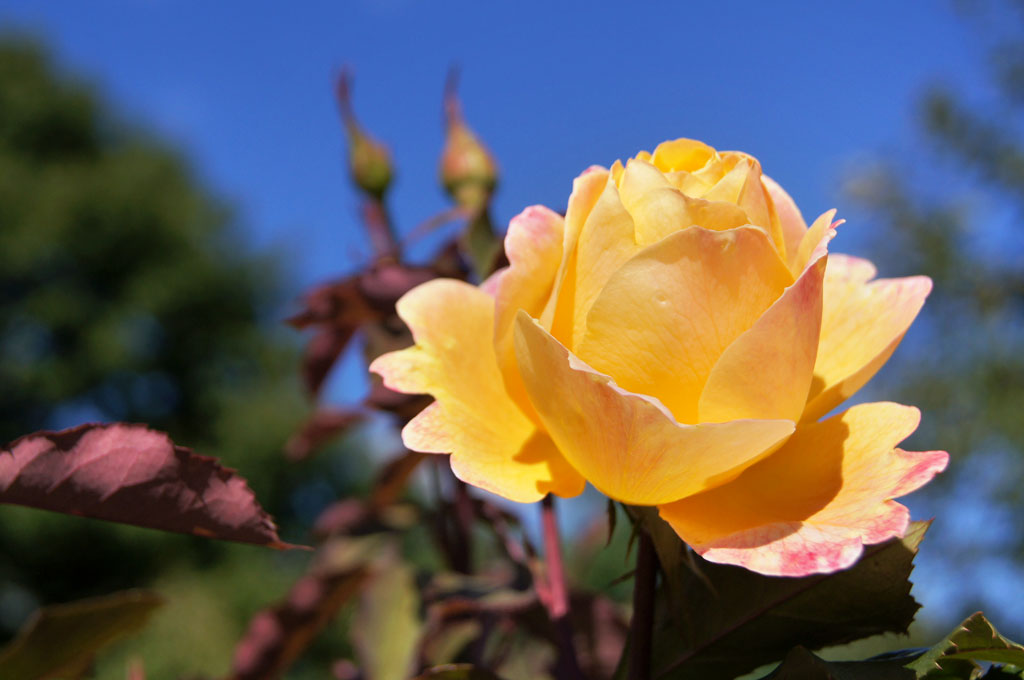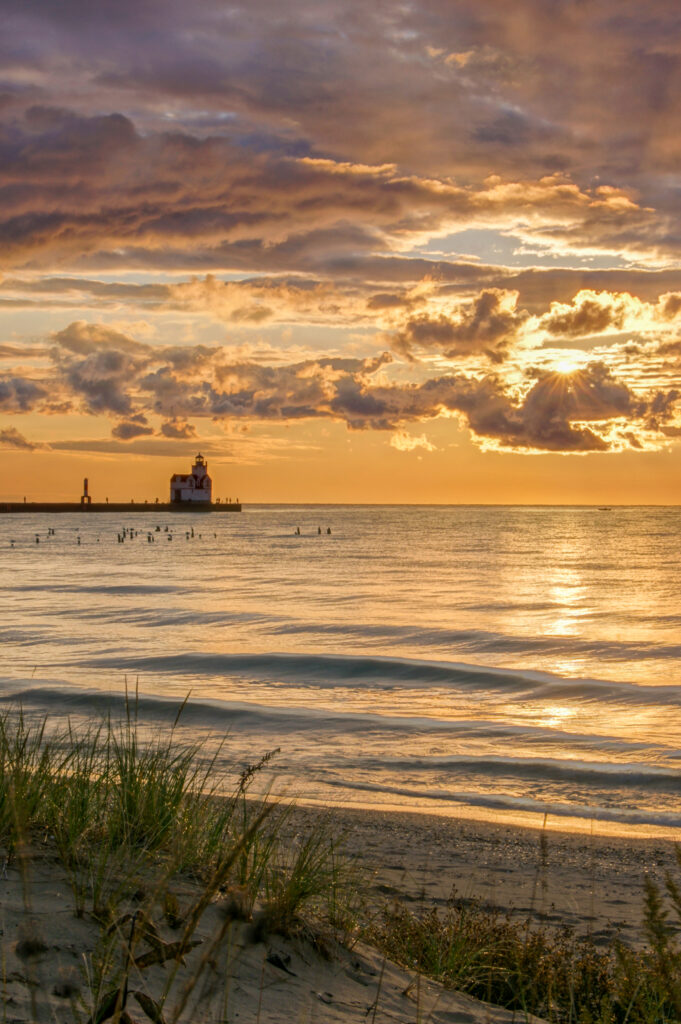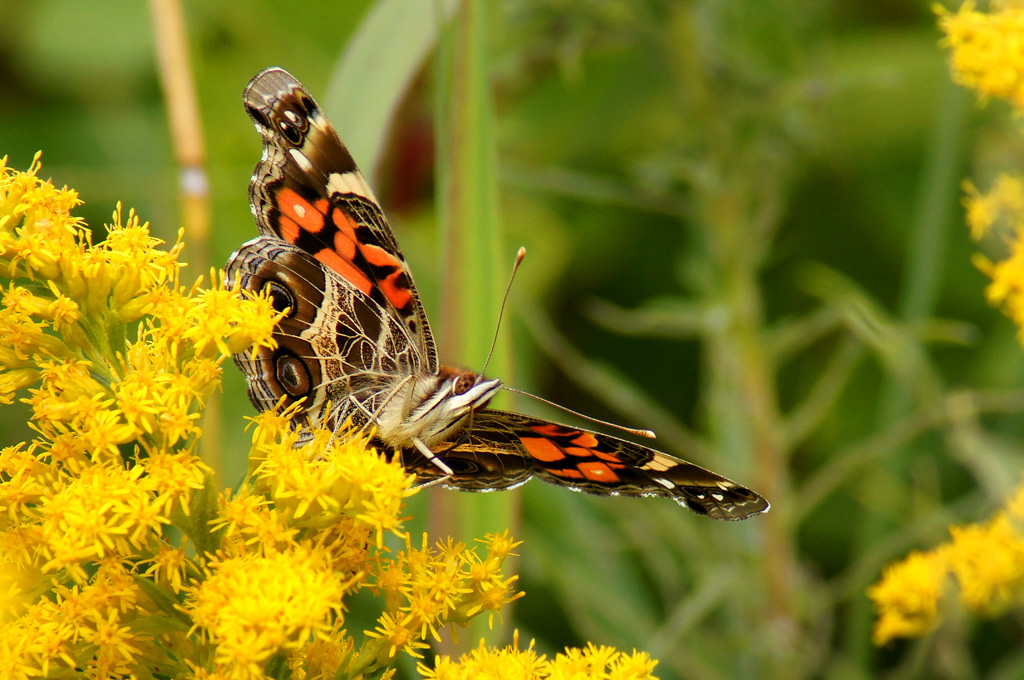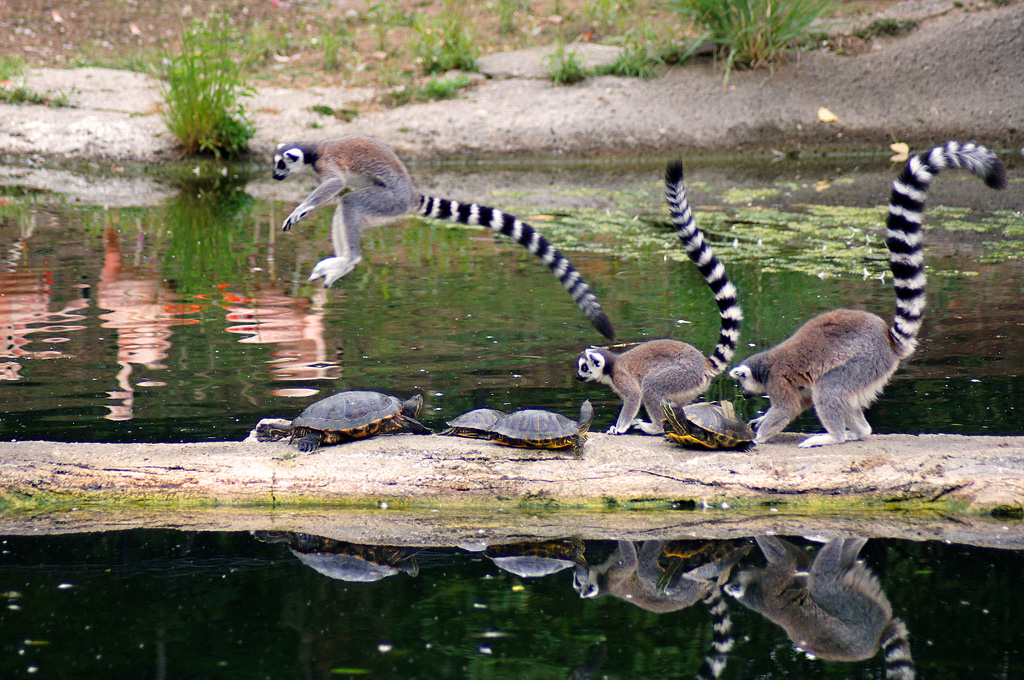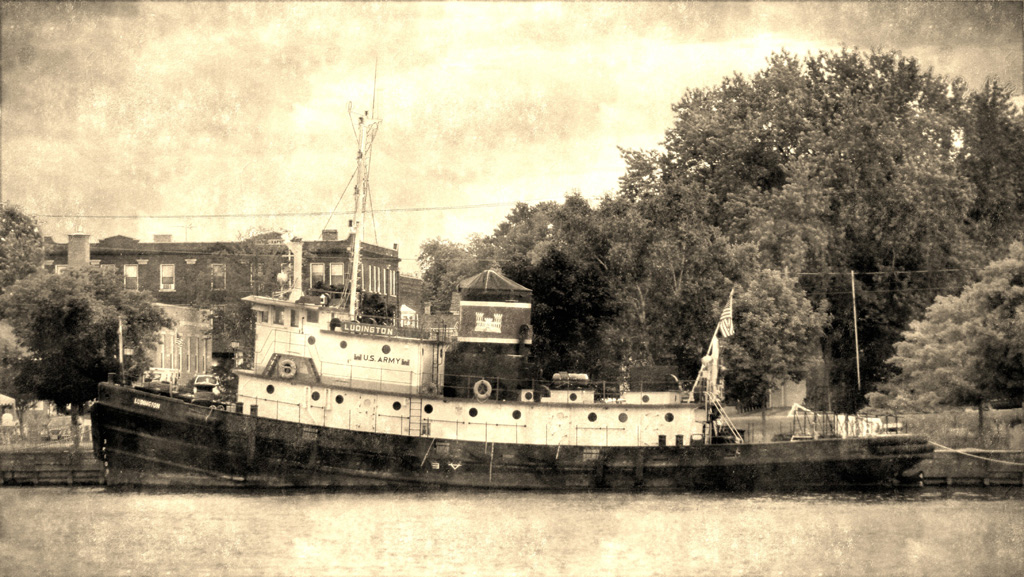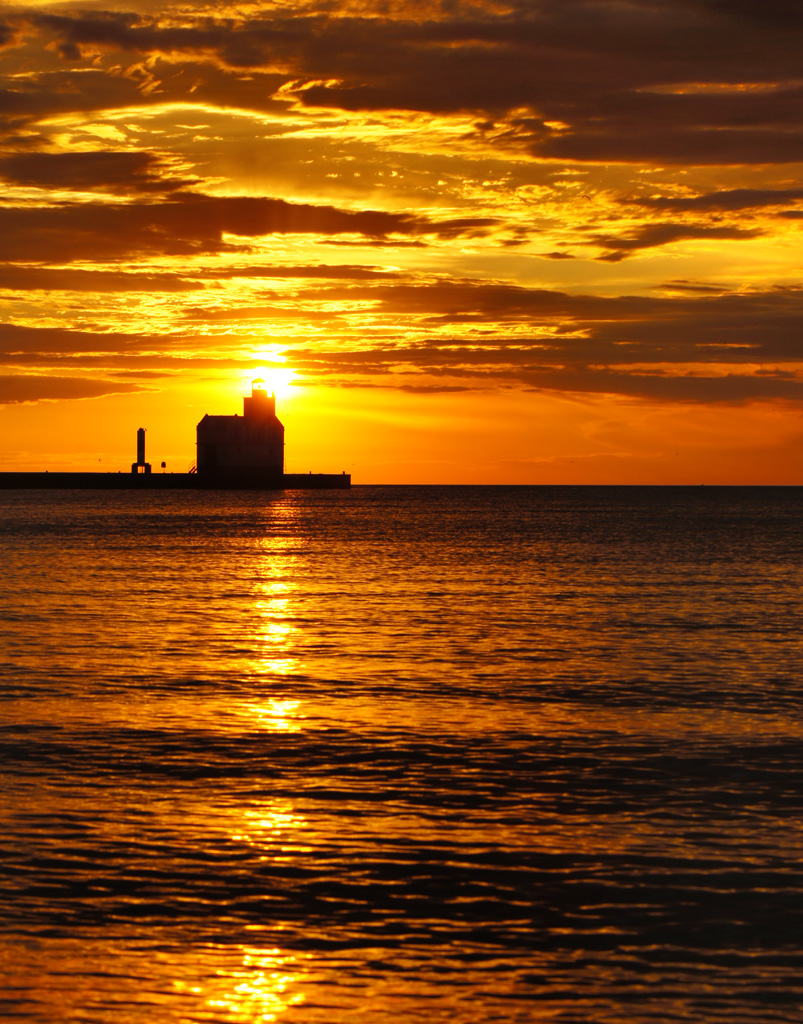Botanicals
Sunrise Brushstrokes
 This was an image I snapped on my way to church Sunday morning, September 11, 2011. The clouds reminded me of the strokes from an artist’s paintbrush.
This was an image I snapped on my way to church Sunday morning, September 11, 2011. The clouds reminded me of the strokes from an artist’s paintbrush.
These are is the piers and lighthouse of the Algoma, WI harbor. The sun, rising above a calm Lake Michigan.
Early morning fishermen are starting to populate the piers as salmon begin their annual to come in to spawn up river. I took this photo around 6:30 am.
If this image appeals to you – by all means – share it with your friends. (Thanks.)
Click the image to view a larger version.
Gazing Beyond
It’s all in the eyes. This ring-tailed lemur obviously had his mind on other things. This is one picture, I think , is worth a thousand or so words.
What do you imagine he’s thinking about? Is he working calculus problems in his head? Fondly remembering a long lost love? Thinking ahead of an upcoming vacation on a secluded, tropical island? Fresh bananas?
I don’t know exactly what he was thinking about. Your guess is as good as mine.
For a better view, click the image to be taken to a larger version.
Risin’ and Shinin’
Brown-eyed Beauty
quest, (noun) 1. The act or an instance of seeking or pursuing something; a search.
I have been on a quest this summer…to find and photograph a butterfly. Seems simple enough. (Yeah, right.)
Every now and then I get a photographic target in my head. One of my targets this summer has been a butterfly image worthy of posting on this blog. Judging by the number of butterflies I’ve seen, much less snapped, butterflies have to be top candidates for some endangered species list. Of the very few I have seen, I’ve not been able to get a good, in-focus, shot of one.
In the last few days, I’ve spotted a few in a vacant field next to my work place. I trudged through the waist high weeds, trying to sneak up on them. They are skittish, flighty little buggers. When I did get one in focus, I couldn’t seem to get a good angle on it…where you can see the wings spread and colors displayed.
This image, though short of my ideal, is the best I’ve been able to come up with and the only one I’ve felt worthy of sharing. And, since it’s not my ideal, the quest will continue.
To get a better view of that brown-eyed beauty, click the image.![]()
By a Thread
 In the spider world, this is a common character. I’ve found and photographed this type in our gardens in Wisconsin. This one was photographed in the woods of Missouri.
In the spider world, this is a common character. I’ve found and photographed this type in our gardens in Wisconsin. This one was photographed in the woods of Missouri.
We typically refer to this as a Garden Spider. If you want to get technical, it’s a Black and Yellow Argiope (argiope aurantia).
If it won’t creep you out, you can view a larger version of this image by simply clicking on the photo.
Anglers in the Grey
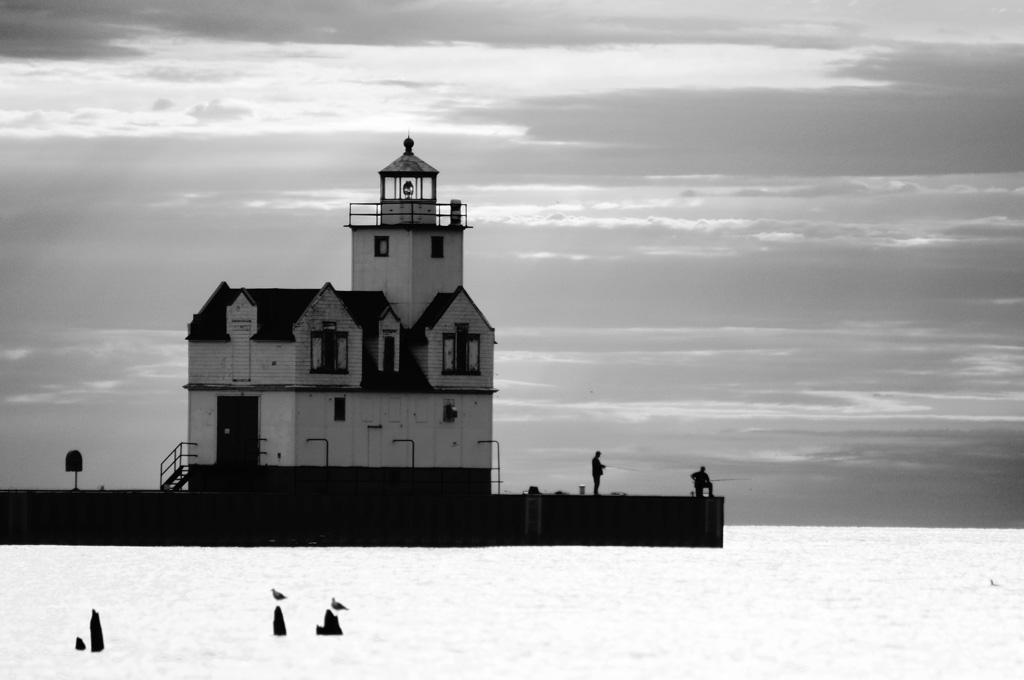 These anglers were at it early on a Saturday morning – fishing from the end of the Kewaunee, WI pier.
These anglers were at it early on a Saturday morning – fishing from the end of the Kewaunee, WI pier.
I’ve posted several other images taken on this same morning – in color and B&W. See Early Amber Rising, Gold Rush, Compelling Clouds over Kewaunee and Summertime Sunrise.
To get a better view of the fishermen, click the photo to see a larger image.
Leapin’ Lemurs
These Ring-tailed Lemurs didn’t care to walk among the herd of turtles on their path, so they took to leaping over them. The turtles just watched.
Notice the pink reflection in the water. Those are flamingos on the shore beyond the water’s edge.
I snapped a number of photos of the Lemurs on a recent visit to the zoo in Indianapolis, IN. You’ll see a few more images posted here in the near future, so check back often.
To view a larger version, click on the image.
Tug Ludington – History on Display

This is the Tug Ludington, docked in the harbor of Kewaunee, WI. I took this photo in early July of 2011. Of course, the image I snapped was clear and colorful. (See the smaller version.) But, because of the rich history of this vessel, dating back to the early ’40s, I decided a “vintage photo” effect seemed appropriate.
To keep with the vintage look, I had to eliminate a red car that appears in the original photo, just above the stern. I simply cloned the foliage near it over the car.
The Ludington now serves as a tourist attraction – open to summertime visitors every day from Memorial Day to Labor Day.
Here’s some of the historic details of the Tug Ludington found on the City of Kewaunee’s web site
Built at Jacobson Shipyard in Oyster Bay, New York, the Tug Ludington was fourth in a series of eight seagoing tugboats constructed specifically for World War II in 1943. After sea trials it was christened the “Major Wilbur Fr. Browder” by the U.S. Army.
The tug’s armament consisted of two 50 caliber machine guns mounted above the chartroom and pilothouse. Tugs were often strafed by enemy planes and submarines, but were considered too small a target to waste a torpedo on.
The tug participated in the D-Day invasion of Normandy, towing ammunition barges across the English Channel. It eventually ended up in Cherbourg, France where it assisted harbor operations until being sent to Plymouth, England for the duration of the war.
In 1947 the tug was transferred to Kewaunee, Wisconsin by the U.S. Army Corps of Engineers and was renamed the “Tug Ludington.” With its arrival in Kewaunee, the Tug Ludington assisted in the construction and maintenance of many harbors on the Great Lakes.
The City acquired the Tug Ludington from the Federal Surplus Program on December 29, 1995 with official transfer from the U.S. Government Service Administration Federal Surplus Property occurring on May 14, 1996.
After acquisition, the City, community volunteers, and donations from both individuals and organizations evolved in the proper mooring facilities being constructed and restoration of the Tug Ludington to make it available for public tours.
On March 28, 2002, the “Major Wilbur Fr. Browder/Tug Ludington” was placed on the National and State Register of Historic Places by the Secretary of the Interior.
Summertime Sunrise
Whether it’s a sunrise or a sunset, for me, it’s the clouds that make the scene worthwhile. This same setup with clear skies would be pretty bland. If you can add the silhouette of a lighthouse and the sun’s reflection off the water, all the better.
Even though I’ve photographed the sunrise over Lake Michigan near the Kewaunee, WI lighthouse many times before, it has never looked quite like this. In every case, the clouds make the difference.



















































